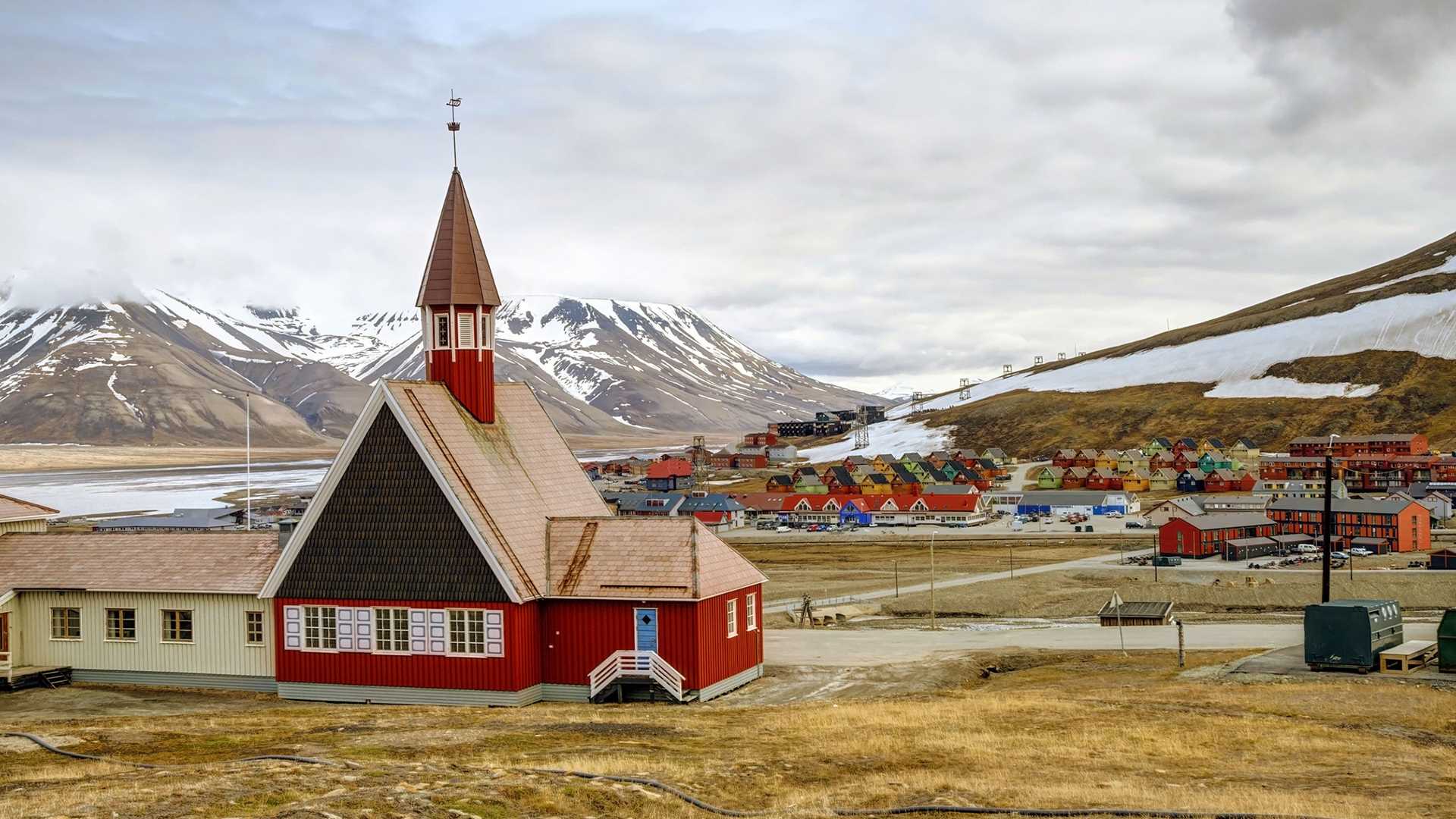Bike lanes are common on many roads, but in the quirky town of Longyearbyen, snowmobiles have their own tracks. The Gateway to the Arctic, Longyearbyen is on Spitsbergen—the largest island in the Svalbard archipelago. It is nestled in a spectacular frozen valley surrounded by mountains, glaciers, and whale-inhabited fjords. Guests on all of our Svalbard expeditions will get the chance to explore this unique mining town founded in 1906 by American businessman John Munroe Longyear, on an island (Spitsbergen means “pointed mountains” in Dutch) named by Willem Barentsz in 1596. Although there are only 25 miles of roads and one grocery store, Longyearbyen has a surprising array of museums, galleries, restaurants, bars, and shops. Here are five fun facts about this one-of-a-kind Arctic community. Get Inspired By Photos, Videos, Webinars, Stories, And Exclusive Offers. Sign Up
It’s the World’s Northernmost Settlement
Just 818 miles from the North Pole at latitude 78˚ North, Longyearbyen is the world’s northernmost settlement with a permanent population of more than 1,000. The 2,400 residents of this town with many “northernmost” claims to fame surprisingly represent 53 different countries. We visit the world’s northernmost church and northernmost museum, and the 300 students of the northernmost university mostly study scientific aspects of the Arctic like biology and geology.
The world’s northernmost brewery is here as is one of the world’s most northerly bars (the cleverly named Svalbar), and a gourmet restaurant considered one of the best in Norway. Longyearbyen also has common community facilities like a hospital, school, and recreation center—all of which can boast of being the northernmost.
Residents Live Under the Polar Night and the Midnight Sun
Longyearbyen residents adapt to days of constant sun or nighttime conditions depending on the month. During the four months of winter darkness, they wear headlamps on their work commutes and have the opportunity to witness the aurora borealis at any time of day. The Polar Night begins and ends with a stunning display of nature—an all-day “blue hour” when blue and red rays stretch from the horizon into the polar sky. The sun’s return in March is welcomed with an annual week-long festival centered around the date when the sun’s rays reach the steps of the old hospital. Then, the polar summer brings the Midnight Sun, a period of all-day sunshine when the frozen world awakes.
You’ll Want to Leave Your Shoes by the Door
It is customary in some world cultures to remove shoes when entering a private home or a place or worship, but this practice is not typically expected in the High Arctic. However, in Longyearbyen, people do take off their footwear indoors at many museums, shops, hotels, and other public places. Back when coal mines were in the middle of town, it was polite to remove shoes so you didn’t leave sooty footprints indoors. Even though mining is not nearly as central to Longyearbyen as it was in the past, this tradition has carried on, and many establishments have cubbies for your outdoor footwear. Indoor slippers are often provided to keep feet warm, but it’s always a good idea to wear warm socks in Longyearbyen—and everywhere else in the Arctic.
The Global Seed Vault Is Around the Corner
More than 1 million seed varieties from almost every country in the world are safeguarded at the Global Seed Vault, built deep into a mountain two miles outside of town. The world’s food supply is protected here from climate disasters, war, and even malfunctioning freezers. Here in Longyearbyen, the naturally frigid temperatures and low humidity, plus an elevation well above sea level provide ideal conditions for prolonged seed viability. Ranging from African sorghum to South American potato, the seeds stored here are the most diverse collection of food crop seeds in the world—a back-up, fail-safe gene bank that ensures the ability to feed generations to come.
Reindeer Wander Through Town—And Polar Bears Loom
In addition to pedestrians and snowmobiles, drivers in Longyearbyen need to be on the lookout for reindeer, as it is not uncommon to see them meandering through town. Endemic to Svalbard, this subspecies usually travels alone or in small groups and doesn’t pose a threat to humans. On the other hand, while polar bears tend to avoid settlements, they do roam beyond the borders of Longyearbyen. In fact, residents are required to carry a rifle for protection when leaving the population center (but forbidden to carry loaded weapons in town), and everyone is trained to use them properly. Of the approximately 3,000 polar bears in the Svalbard archipelago, only about 300 live in Spitsbergen, but it is still possible to encounter them on the outskirts of Longyearbyen. Look for the iconic red, black, and white “Beware of Polar Bears” sign—a fun photo op for Arctic visitors.




